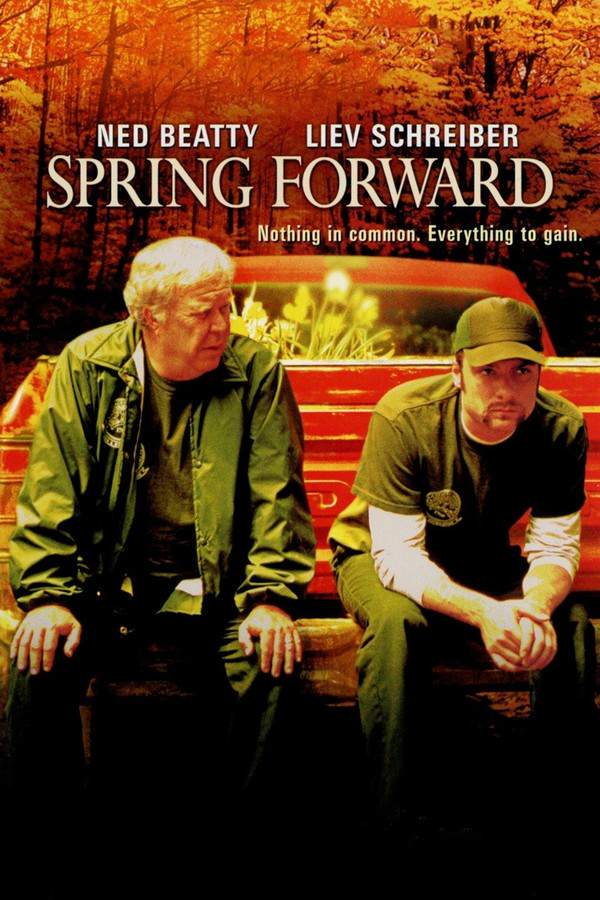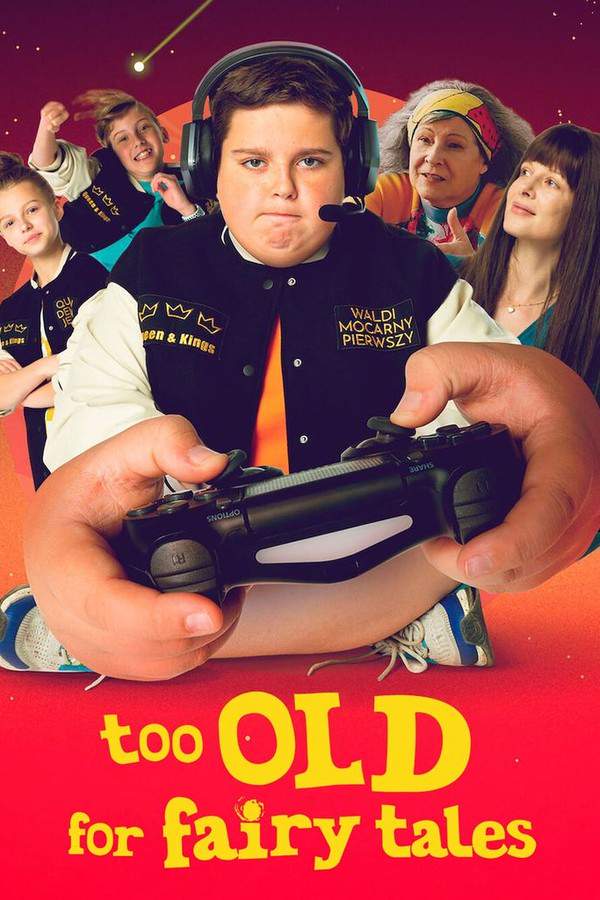
The Boat Builder
Year: 2015
Runtime: 88 mins
Language: English
Director: Arnold Grossman
A solitary, weathered mariner seeks solace in constructing a boat, hoping to spend his remaining years at sea. His plans are continually disrupted when a young orphan enters his life, forging an unexpected connection. Facing interference from local authorities and navigating the challenges of fostering, the old sailor must confront his own bitterness while striving to complete his project and find peace.
Warning: spoilers below!
Haven’t seen The Boat Builder yet? This summary contains major spoilers. Bookmark the page, watch the movie, and come back for the full breakdown. If you're ready, scroll on and relive the story!
The Boat Builder (2015) – Full Plot Summary & Ending Explained
Read the complete plot breakdown of The Boat Builder (2015), including all key story events, major twists, and the ending explained in detail. Discover what really happened—and what it all means.
Christopher Lloyd plays Abner Green, a reclusive, embittered former sea captain who tends an aging house and a weathered sailing sloop on the edge of the San Francisco coast. He lives largely apart from the town, already worn down by the cancer that claimed his wife years earlier and by a life that seems to have closed off all but stubborn routines. The only bright spot in his isolated world is his daughter Katherine, Jane Kaczmarek, who visits regularly and frets over his health and happiness. Katherine’s concern clashes with Abner’s refusal to listen, a stubbornness born of grief and pride that keeps him entrenched in his solitary dream of sailing away from a world he believes has grown troublesome and unkind.
Everything shifts when a group of four neighborhood hoodlums on bicycles harasses Abner, leaving him with a sense of violation and fatigue he can hardly bear. In the middle of this tense moment, a frightened young boy named Rick, Tekola Cornetet, appears on his property, claiming the delinquents are chasing him. Abner is wary, but the boy’s fear and desperation spark a cautious, uneasy sense of kinship. Rick’s presence becomes a quiet catalyst: he sees something in Abner’s old boat that resonates with his own longing for escape and purpose. Rick offers to help, and his practical skills—especially as a carpenter’s assistant—begin to bridge the gulf between the stubborn old man and a world that has always judged him. Their exchange ranges from gruff warnings about the ocean’s dual nature to shared jokes that hint at a deeper mutual respect. Above all, Rick’s enthusiasm for the voyage ahead rekindles something like hope in Abner, a belief that a voyage could be both a cure and a test.
The next day, Rick and his foster father, Charles, David Lascher, visit Abner, and Rick is invited to stay and help for a spell. As the trio spends time on the boat, Abner softens, revealing memories and dreams he had long hidden. He speaks of currents, storms, and the lure of the sea’s endless horizon, as Rick listens with a surprisingly patient and confident calm. The moment is forged not by grand speeches but by small, tangible acts—caulking, replacing a plank, mounting a new sail—that become a shared language of trust. Abner starts to explain the risks of a long voyage—how storms can threaten life, how a craft can fail just when land seems closest—but Rick meets the cautions with buoyant readiness, maintaining his dream even as he absorbs the gravity of Abner’s wisdom.
Trouble isn’t far away, though. One night, Rick is haunted by a nightmare of a voyage gone wrong, and Charles worries that Abner’s stories might be destabilizing the boy’s mind. He suggests—or perhaps fears—that Rick might need to be placed in a juvenile facility to cope with distress. Rick, who has already endured a painful past in a delinquent home, insists he would rather run away thanreturn to confinement. The tension is amplified when the group is assaulted again by the four hoodlums; Rick is targeted, and the vandalism on Abner’s boat seems to confirm a conspiracy that is easy to believe but hard to bear. Ruth, Rick’s foster sister, Rachel Resheff, arrives with a shocking revelation: her brother Donnie was in league with the youths and had talked with them about the attack. Abner’s faith in Rick is renewed as Rick’s innocence is proven, and the two men reconnect with renewed resolve to finish the boat.
Meanwhile, Katherine remains a formidable thorn in Abner’s plans. She reports the boat-building to the city’s code-enforcement officer, hoping to force Abner to abandon the project and perhaps move into a nursing home where his health could be cared for. The officer issues a two-week deadline before the boat would be demolished under local ordinances, a stark countdown that could snuff out Abner’s lifelong dream. The news shakes Abner, but Rick refuses to concede. He urges Abner to press forward, to complete the necessary refurbishments within the grace period, and the two labor together with a sense of mission. Their shared determination deepens their bond; every plank secured, every sail re-stitched, every tool laid down becomes a pledge that they will not surrender to the pressures of age, fear, or society’s labels.
The two weeks slip away in a flurry of late-night work and quiet camaraderie. On the eve of the demolition, something miraculous happens: the boat and the two men vanish from sight, and the city and press are left in a stunned sort of confusion. It’s soon revealed that Rick had secretly stowed away on Abner’s boat to stay with him, a decision that only becomes real once they are already beyond the familiar shoreline. The dawn finds them far out at sea, past the Farallon Islands, with Abner’s gaze steady on the horizon and Rick at the helm. Abner offers simple, practical navigation tips, guiding Rick with patient instruction as they slip into the unknown together. The ending leaves a quiet, brave sense of departure—two unlikely travelers choosing freedom, trust, and a shared life beyond the shore.
In the end, the film lingers on the themes of solitude and connection: a grizzled man’s longing to reclaim a life he feels he could still have, a boy’s hunger for belonging and a fresh start, and the unexpected power of mentorship and companionship to redraw the boundaries of what’s possible. It is a story about resilience, the stubborn courage to pursue one’s dreams, and the way human bonds can steer us toward safer harbors even when the harbor seems to have disappeared.
Last Updated: October 03, 2025 at 06:45
Explore Movie Threads
Discover curated groups of movies connected by mood, themes, and story style. Browse collections built around emotion, atmosphere, and narrative focus to easily find films that match what you feel like watching right now.
Movies about intergenerational bonds like The Boat Builder
Stories of solitary souls who find purpose through an unexpected connection.If you liked the heartfelt connection between Abner and Rick in The Boat Builder, you'll appreciate these movies about intergenerational friendship and mentorship. These stories focus on the healing power of unlikely bonds, where a shared project or journey brings together the lonely and the lost, forging a new kind of family.
Narrative Summary
The narrative follows a solitary character, often set in their ways, whose life is disrupted by the arrival of a younger person in need. Initial resistance gives way to a slow-building bond, centered around a tangible goal or skill. The central conflict often involves external pressures or internal baggage that the pair must overcome together, strengthening their connection.
Why These Movies?
These films are grouped by their focus on the transformative power of mentorship and found family. They share a heartwarming, hopeful core where emotional walls are broken down through patience and shared experience, resulting in a deeply satisfying character-driven journey.
Slow-paced healing dramas similar to The Boat Builder
Gentle stories where characters find peace through tangible acts and quiet resilience.For viewers who enjoyed the methodical, reflective mood of The Boat Builder, this list features movies with a similar slow pace and focus on healing. These gentle dramas show characters overcoming personal struggles through quiet determination and tangible acts, resulting in a bittersweet but ultimately hopeful viewing experience.
Narrative Summary
The plot is often straightforward, centering on a character working through emotional pain by immersing themselves in a physical, repetitive activity. The journey is internal, with external conflicts serving as minor obstacles rather than the main focus. The resolution is typically bittersweet, acknowledging the scars of the past while embracing a newfound, quiet hope for the future.
Why These Movies?
These movies share a specific vibe: a slow, gentle pacing combined with a meditative focus on a craft or task that symbolizes healing. They create a soothing, reflective atmosphere where the emotional payoff comes from quiet character growth rather than high-stakes drama.
Unlock the Full Story of The Boat Builder
Don't stop at just watching — explore The Boat Builder in full detail. From the complete plot summary and scene-by-scene timeline to character breakdowns, thematic analysis, and a deep dive into the ending — every page helps you truly understand what The Boat Builder is all about. Plus, discover what's next after the movie.
The Boat Builder Timeline
Track the full timeline of The Boat Builder with every major event arranged chronologically. Perfect for decoding non-linear storytelling, flashbacks, or parallel narratives with a clear scene-by-scene breakdown.

Characters, Settings & Themes in The Boat Builder
Discover the characters, locations, and core themes that shape The Boat Builder. Get insights into symbolic elements, setting significance, and deeper narrative meaning — ideal for thematic analysis and movie breakdowns.

The Boat Builder Spoiler-Free Summary
Get a quick, spoiler-free overview of The Boat Builder that covers the main plot points and key details without revealing any major twists or spoilers. Perfect for those who want to know what to expect before diving in.

More About The Boat Builder
Visit What's After the Movie to explore more about The Boat Builder: box office results, cast and crew info, production details, post-credit scenes, and external links — all in one place for movie fans and researchers.




























